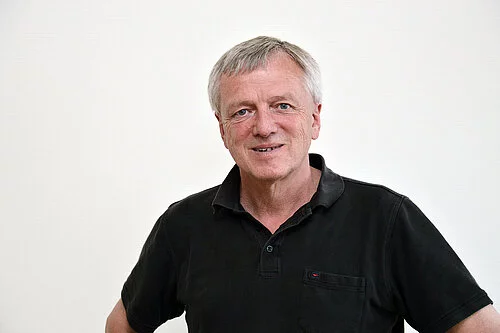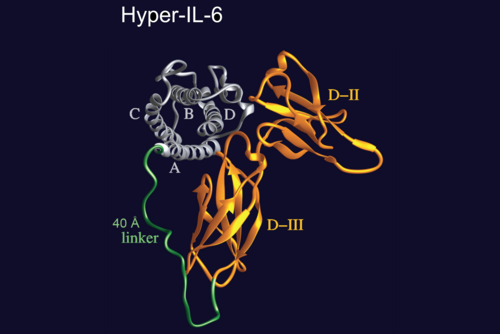Traumaticbraininjury:moleculefromKielsupportsbrainrepair
Internationalresearchteamhasdiscoveredhowrepairafterabraininjurycanbeimprovedbyinfluencingimmunecells
Withatraumaticbraininjury,avaryingnumberofnervecellsinthebraindieoff,dependingontheseverityoftheinjury.Suchbraininjuriescanimpairsomeonesconcentration,theabilitytomakedecisions,learningandmemory.AmoleculedevelopedbyProfessorStefanRose-John,memberoftheClusterofExcellence"PrecisionMedicineinChronicInflammation"(PMI),andExecutiveDirectoroftheInstituteofBiochemistryatKielUniversity(CAU),couldtriggeramechanismthatrepairsthisdamage,asindicatedbynewresearchresultswhichRose-JohnandinternationalresearchersundertheleadershipoftheUniversityofQueenslandinBrisbane,AustraliarecentlypublishedintheprestigiousscientificjournalCell.
Theresearchersinvestigatedhowtheimmunesysteminthebrainsofmiceinteractswithbrainnervecellsafteraninjury,andhowthisinfluencesthememoryandtheabilitytolearn."Previously,weassumedthatafterabraininjury,specificimmunecellsinthebrain,themicroglia,promoteinflammationofthebrainandtherebyleadtoareductionincognitiveskills,"reportedtheleadauthorofthepublication,Dr.JanaVukovic,fromtheUniversityofQueensland."However,whenweremovedmicrogliafrommiceweweresurprisedthattherewasabsolutelynochangeintheirbehaviourorabilitytorepairbraintissue,"continuedVukovic.Inresponsetothisfinding,theresearchteamthenstimulatedincreasedformationofnewmicrogliainanimalexperimentsanddiscoveredthatthispromotestherepairofnervecells."Therejunevatedmicrogliaimprovedthemice'slearninganmemory,preservedtissuelossandstimulatedthebirthofneurons,"saidVukovic.
Interleukin-6promotesrepair
ThedrivingforcebehindthisregenerativeprocessisthesignalingmoleculeInterleukin-6(IL-6):whentheresearchersblockeditcompletelyinexperiments,theregenerativeeffectofmicrogliaalsodisappeared.WhentheyincreasedtheamountofIL-6present,theystimulatedtheprocess.Thesignalingmoleculeisanimportantchemicalmessengerwhichraisesthealarmifinflammatoryreactionsoccur,forexample,whenitissecretedinincreasedquantities,andthusregulatesimmuneresponses.Itcanfunctionviatwodifferentsignalingpathways:inthe"traditional"signalingpathway,IL-6specificallybindstoareceptorwhichisonlypresentincertaincells,suchaslivercells.Together,theythenbindtoanotherreceptorsubunitonthesamecell,theso-calledgp130protein,therebytriggeringareactioninthecell.Inthealternativeso-called"IL-6trans-signalingpathway",ontheotherhand,IL-6canaffecteverycellinthebodyundercertaincircumstances.ThespecificIL-6receptorisalsopresentinsolubleformintheblood.IL-6canbindtothesefreereceptorscirculatinginthebloodstream.Thiscompoundthenbindstoagp130-receptor,whichispresentonallcells,andtriggersareactioninthecell.
Adesignermoleculeasamoleculardiagnostictool
Rose-Johndiscoveredthistrans-signalingpathway,whichisinvolvedinmanyphysiologicalprocesses,andhasachievedpioneeringresearchininvestigatingitscentralimportance."Wehavedevelopedseveralmoleculartoolsoverthepastfewyearsthatwecanusetotestwhichsignalingpathwayisactiveinaparticulardiseasepattern,"explainedRose-John.Thesemoleculartoolsincludetheartificialmolecule"Hyper-IL-6",whichwasalsousedinthecurrentstudy.ItconsistsofthesignalingmoleculeInterleukin6(IL-6)anditsspecificreceptorinsolubleform,i.e.notboundwithacell.Together,theyformacompletelynewmoleculewhichdoesnotexistinthisforminnature.Justlikeitsnaturally-occurringindividualcomponents,thisnewmoleculealsostimulatestheIL-6trans-signalingpathway,butitissignificantlymoreeffectivesinceIL-6anditsreceptornolongerhaveto"findeachother"intheblood,liketheywouldnormallydoinnature.
RegenerationviatheIL-6trans-signalingpathway
Inthecurrentstudy,Hyper-IL-6showedapositiveeffect:afteradministeringthemoleculetoinjurednervecells,moremicrogliaformed,whichinturnledtotheformationofnewnervecells,andultimatelytoanimprovementofthesymptoms."Theresultsshowthatthenewly-discoveredregenerativeeffectofmicrogliaafterabraininjuryistriggeredbyIL-6viathetrans-signalingpathway,"saidRose-John."Thisobservationisalsointeresting,becauseupuntilnowwehadnoideahowIL-6worksinthebrain."
Infuture,theresultscouldenablethedevelopmentofnewdrugstoalleviatelearningandmemorydeficitsafterthenervecellshavebeendamaged.Theythereforeofferpromisingpotentialfortreatingavarietyofneurologicaldisorderssuchasbraininjury,dementiaandotherneurodegenerativediseases.
Originalpublication:
EmilyF.Willis,StefanRose-John,MarcJ.Ruitenberg,andJanaVukovic:RepopulatingMicrogliaPromoteBrainRepairinanIL-6-DependentManner,Cell(2020).
DOI:10.1016/j.cell.2020.02.013
Furtherinformation:
InstituteofBiochemistry,KielUniversity
CollaborativeResearchCentre(CRC)877"ProteolysisasaRegulatoryEventinPathophysiology"
VukovicGroup-NeuroimmunologyandCognition,TheUniversityofQueensland,Australia
Withthedesignermolecule"Hyper-IL-6",anIL-6moleculeisfirmlyboundtoitsspecificsolublereceptor.ThenewmoleculecanthusactivatetheIL-6trans-signalingpathwaymuchmoreeffectivelythanbothmoleculesindependently.
ProfessorStefanRose-John,memberoftheClusterofExcellence"PrecisionMedicineinChronicInflammation",formerExecutiveDirectoroftheInstituteofBiochemistryatKielUniversity(CAU),andheadoftheCollaborativeResearchCentre(CRC)877"ProteolysisasaRegulatoryEventinPathophysiology".
AbouttheClusterofExcellencePMI
TheClusterofExcellence"PrecisionMedicineinChronicInflammation"(PMI)isbeingfundedfrom2019to2025throughtheGermanExcellenceStrategy(ExStra).Itsucceedsthe"InflammationatInterfacesCluster,whichwasalreadyfundedintwoperiodsoftheExcellenceInitiative(2007-2018).Around300membersfromeightinstitutionsatfourlocationsareinvolved:Kiel(KielUniversity,UniversityMedicalCenterSchleswig-Holstein(UKSH),MuthesiusUniversityofFineArtsandDesign,KielInstitutefortheWorldEconomy(IfW),LeibnizInstituteforScienceandMathematicsEducation(IPN)),Lbeck(UniversityofLbeck,UniversityMedicalCenterSchleswig-Holstein(UKSH)),Pln(MaxPlanckInstituteforEvolutionaryBiology)andBorstel(ResearchCenterBorstel-LeibnizLungCenter).
Thegoalistotranslateinterdisciplinaryresearchfindingsonchronicinflammatorydiseasesofbarrierorganstohealthcaremoreintensively,aswellastofulfilpreviouslyunsatisfiedneedsofthepatients.Threepointsareimportantinthecontextofsuccessfultreatment,andarethereforeattheheartofPMIresearch:theearlydetectionofchronicinflammatorydiseases,thepredictionofdiseaseprogressionandcomplications,andthepredictionofindividualresponsestotreatment.
Pressoffice
fbuhse@uv.uni-kiel.de+49(0)431/8804682https://precisionmedicine.de
ClusterofExcellence "PrecisionMedicineinChronicInflammation"
ScientificOffice
Head:Dr.habil.SusanneHolsteinPostal
Christian-Albrechts-Platz4,24118Kiel,Germany
Contact:SonjaPetermann
 +49(0)431880-4850,fax:+49(0)431880-4894
spetermann@uv.uni-kiel.de
Twitter:PMI@medinflame





